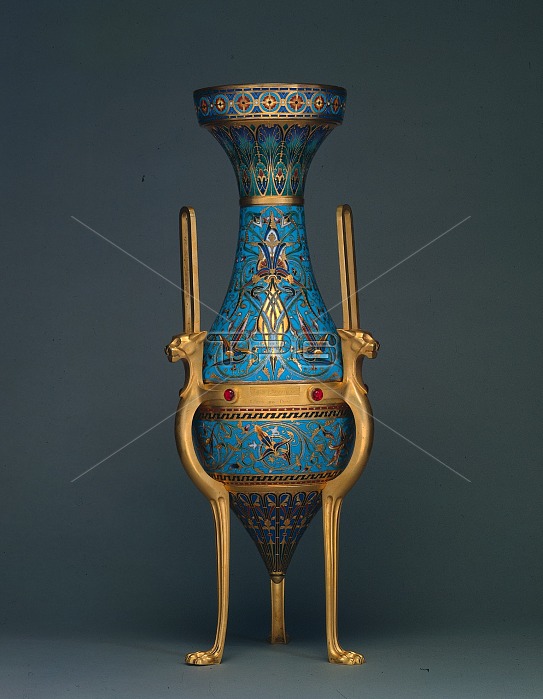
Vase, c. 1862. In style, the vase is resoundingly eclectic. It derives its form from a slightly modified ancient Greek amphora-a two-handled jar having a narrow neck. Contemporaries described its style as neo-grec (new Greek) or Byzantine. Today, however, we would not choose those terms. It is true that the surface decoration of the vase is based upon the scrolling pattern of a classical acanthus design-an arrangement of leaves and flowers-but the sharp, spiky details point to possible Islamic modifications of this pattern. The colours of the enamels are related to medieval European examples, particularly 12th-century Netherlandish work from the Mosan region. The decoration of this vase exemplifies a technical innovation introduced by the Barbedienne firm around 1860. In casting the metal from which the piece is formed, many small grooves were created on its surface. Later these grooves and other broader recessed areas were filled with coloured enamels to create a predetermined ornamental design.
| px | px | dpi | = | cm | x | cm | = | MB |
Details
Creative#:
TOP25280651
Source:
達志影像
Authorization Type:
RM
Release Information:
須由TPG 完整授權
Model Release:
No
Property Release:
No
Right to Privacy:
No
Same folder images:

 Loading
Loading